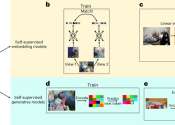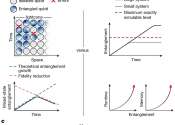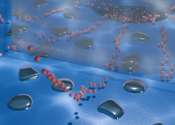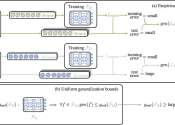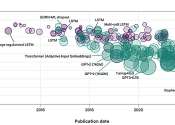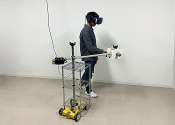Computer Sciences news
Computer Sciences
Adobe's VideoGigaGAN uses AI to make blurry videos sharp and clear
A team of video and AI engineers at Adobe Research has developed an AI application called VideoGigaGAN, that can accept a blurry video and enhance it to make it a much shaper product. The team describes their work and results ...
18 hours ago
0
23
Computer Sciences
'POLAR' lowers the adoption barrier for adaptive query processing in database systems
The preprint "POLAR: Adaptive and Non-invasive Join Order Selection via Plans of Least Resistance" introduces an adaptive query processing technique that lowers the adoption barrier for existing database systems while decreasing ...
14 hours ago
0
0

Emulating neurodegeneration and aging in artificial intelligence systems
In recent years, developers have introduced artificial intelligence (AI) systems that can simulate or reproduce various human abilities, such as recognizing objects in images, answering questions, and more. Yet in contrast ...

New tech could help traveling VR gamers experience 'ludicrous speed' without motion sickness
Vehicle passengers using VR headsets to pass the time during travel could be set to enjoy games which move at 'ludicrous speed' without experiencing motion sickness, researchers say.
Apr 24, 2024
0
15

Research team accelerates multi-physics simulations with El Capitan predecessor systems
Researchers at Lawrence Livermore National Laboratory (LLNL) have achieved a milestone in accelerating and adding features to complex multi-physics simulations run on Graphics Processing Units (GPUs), a development that could ...
Apr 24, 2024
0
1
Electronics & Semiconductors
Holographic displays offer a glimpse into an immersive future
Setting the stage for a new era of immersive displays, researchers are one step closer to mixing the real and virtual worlds in an ordinary pair of eyeglasses using high-definition 3D holographic images, according to a study ...
Apr 23, 2024
0
33
Computer Sciences
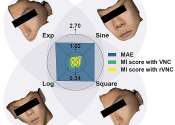
Coordinate-wise monotonic transformations enable privacy-preserving age estimation with 3D face point cloud
In a recent publication in Science China Life Sciences, a research team led by Professor Jing-Dong Jackie Han and Ph.D. student Xinyu Yang from Peking University established a deep learning model for age estimation using ...
Apr 23, 2024
0
1
Computer Sciences

New mitigation framework reduces bias in classification outcomes
We use computers to help us make (hopefully) unbiased decisions. The problem is that machine-learning algorithms do not always make fair classifications if human bias is embedded in the data used to train them—which is ...
Apr 23, 2024
0
0
Computer Sciences

Scientists revisit multi-dimensional classification from a dimension-wise perspective
While the class imbalance issue has been extensively investigated within the multi-class paradigm, its study in the multi-dimensional classification (MDC) context has been limited due to the imbalance shift phenomenon. A ...
Apr 23, 2024
0
1
Computer Sciences

New logarithmic step size for stochastic gradient descent
The step size, often referred to as the learning rate, plays a pivotal role in optimizing the efficiency of the stochastic gradient descent (SGD) algorithm. In recent times, multiple step size strategies have emerged for ...
Apr 22, 2024
0
7
Computer Sciences

Linkable and traceable anonymous authentication with fine-grained access control
Anonymous authentication plays a crucial role in privacy-focused applications, and it is used for authenticating a user's identity in a privacy-preserving way. If enough privacy is provided, malicious users may misuse privacy. ...
Apr 19, 2024
0
8
Internet

For more open and equitable public discussions on social media, try 'meronymity'
Have you ever felt reluctant to share ideas during a meeting because you feared judgment from senior colleagues? You're not alone. Research has shown this pervasive issue can lead to a lack of diversity in public discourse, ...
Apr 18, 2024
0
38
Hardware
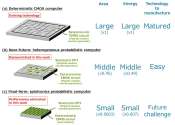
Researchers develop energy-efficient probabilistic computer by combining CMOS with stochastic nanomagnet
Researchers at Tohoku University and the University of California, Santa Barbara, have unveiled a probabilistic computer prototype. Manufacturable with a near-future technology, the prototype combines a complementary metal-oxide ...
Apr 17, 2024
0
57
Software

New apps help researchers with statistical analyses of data
It's a sign of the times: an app store for omics enthusiasts. The Multi-Omics Analysis Portal (MAP) by the end of 2024 will be a one-stop shop for computer applications capable of making sense of various and vast omics data. ...
Apr 16, 2024
0
9
Computer Sciences

Deepfake detection improves when using algorithms that are more aware of demographic diversity
Deepfakes—essentially putting words in someone else's mouth in a very believable way—are becoming more sophisticated by the day and increasingly hard to spot. Recent examples of deepfakes include Taylor Swift nude images, ...
Apr 16, 2024
0
1
Computer Sciences

Clear guidelines needed for synthetic data to ensure transparency, accountability and fairness, study says
Clear guidelines should be established for the generation and processing of synthetic data to ensure transparency, accountability and fairness, a new study says.
Apr 13, 2024
0
1























